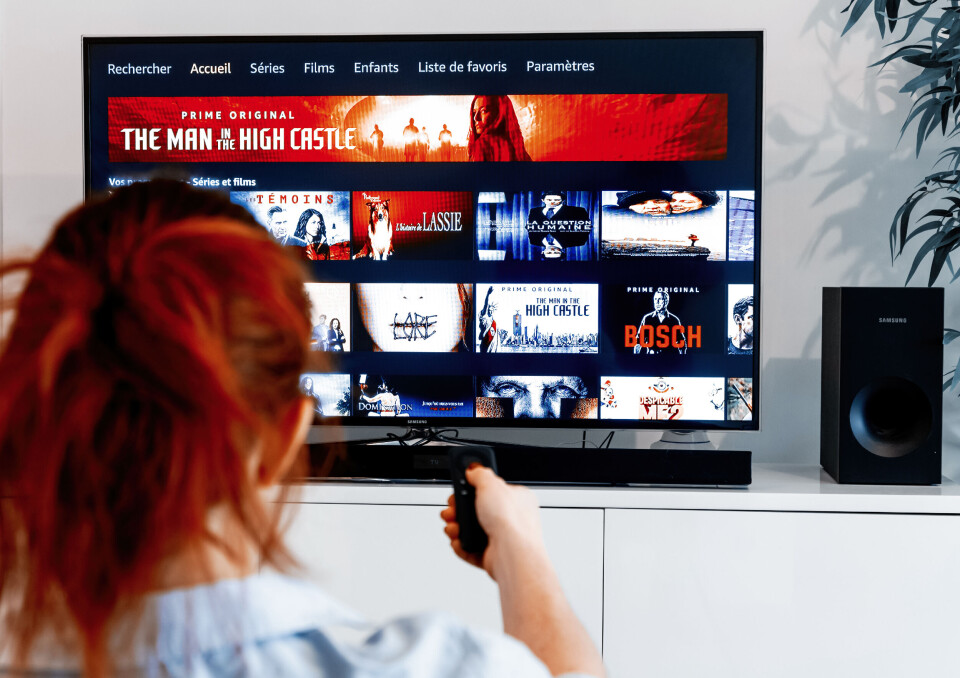-
Chauvet cave in south of France is slowly revealing its secrets
3D technology is revolutionising our understanding of 36,000-year-old paintings in the Chauvet Cave in Ardèche
-
How does France’s April Fools’ Day differ from that in UK or US?
It is in schools where we see a real French peculiarity
-
Five famous April Fools' pranks played on the French public
The French media have pulled some classic ‘poissons d’Avril’ - here are five of the best
Make sense of French television’s role in social and cultural life
Police shows, pornography and why there is no France 1 channel - a look at TV in France

French TV is very different from British and US television in its role in the social and cultural life of the nation.
In the cultural sphere, it tends to be somewhat sneered at by the elite, who prefer cinema, music, theatre and books, which get large state subsidies, although all of these receive significant promotion on TV.
The best films are often shown midweek or on Sunday night due to old government rulings encouraging people to visit cinemas on Fridays and Saturdays to support the French film industry.
Some long time slots (often late afternoon) are given over to group discussions by authors talking about books or art.
Yet it is not uncommon for French people to have a TV in the kitchen, living room and bedroom, and to watch it with breakfast, lunch and dinner.
Read more: French people love cinema - and their tickets fund new films
Miss France and the World Cup
Two major televised events unite the nation: national election results and successful football World Cup runs.
Médiamétrie, which publishes TV audience figures, reported that in 2022 the World Cup Final was the most watched programme in France, with 24.1 million viewers.
Indeed, World Cup football occupied the top seven places before the surprise hit show HPI (Haut potentiel intellectuel), a series about a super high IQ cleaning lady who helps police, came in at eight with 10.9 million viewers.
The Tour de France is also a TV staple, with one in four people in France tuning in to watch part of the race live, while some 7.1 million people watched the Miss France final last year.
‘JT’ (journal télévisé) news programmes are another institution, with millions of viewers tuning in daily to France 2 and TF1 at 13:00 and 20:00.
In rural areas, France 3, the state’s regional channel, covers local news, getting high viewing figures for programmes about obscure local cheeses, drinks and customs.
Canal+ pioneer pay TV
France was among the pioneers in Europe for pay TV, which arrived in the early 1980s with Canal+ on satellite.
It became one of the most watched channels despite its high price, partly due to its exclusive football matches and late-night pornography – its porn films on Saturday nights were said to have sparked both a loss of productivity on Mondays and a boom in video recorder sales.
Why is there no France 1?
Today, public broadcasting in France is comprised of eight channels: France 2, 3, 4 and 5; France Info; Arte; France 24; and TV5 Monde.
They received 90% of their funding from the TV licence fee until this was abolished last year.
These channels continue to receive public funding, but the government is yet to settle on a long-term plan. For now, this is coming out of VAT.
Read more: Do second-home owners in France still pay a television licence fee?
If you wonder why there is no France 1, this is due to a quirk of history.
The first channel was created in 1935. It went through several names before becoming Télévision Française 1 in 1975.
A second channel had been launched in 1964 and a third, directly in colour, in 1972.
Until 1981, there was a state monopoly on radio and TV broadcasting in France.
Canal+ was the first private TV station, in 1984 – currently owned by French mass media holding group Vivendi – followed by La Cinq in 1985 and TV6 in 1986.
The state then decided to privatise one of its channels, TF1, in 1987.
The goal was to “distance the state from the news”, said the culture minister at the time.
TF1 is now representative of France’s concentrated media landscape, as it is owned, along with TMC, TFX and LCI, by the Bouygues group.
Today, 63% homes access TV via the internet
This mode of transmission now dominates other forms, such as TNT (digital terrestrial television [télévision numérique terrestre in French]) and satellite TV.
Analogue TV ended in 2011. Since then, all TVs need to be equipped for TNT (26 channels), which for older sets means fitting a €20 decoder box to carry the signal from an antenna (in newer models this is built in).
House sellers often take aerials and satellite dishes with them.
It is worth getting a local professional to install it (around €100) to ensure it is securely fixed and angled for the best reception.
To benefit from TV from an internet services provider, you need fast broadband.
If you meet the requirements, the full panoply of Netflix, Amazon Prime, Apple TV and Disney Plus is available.
Prices for a ‘box’ package including telephone, TV and internet connection start at around €15 a month.
Read more: Red button for Salto, France’s answer to Netflix
Learn French with TV
Watching TV is a great way of learning a language, once you have basic vocabulary.
News programmes are especially useful – reporters are trained to speak clearly, and the images give an indication of what they are talking about.
There is often a temptation to switch over to the original language the programme was made in.
The 25 free channels include a lot of American TV shows from the last 15 years, as well as the occasional British or Australian TV series, which are available in English if rights to show them were bought after the 2005 introduction of TNT.
A button push on the remote control will switch you over.
An example is the US TV show Bones, where early series are dubbed in French, but later ones can be watched in English.
Other hit US series on free TV include SWAT, Big Bang Theory, The Good Wife, The Closer, Friends and Dr House.
Once a series is bought, it is typically shown four or more episodes at a time, rather than once a week.
Most modern films acquired by French TV are also available in English.
If the TV channel has bought the rights outright, expect to see the same films offered time and time again.
Read more: US TV lovers handed boost as new streaming service comes to France
‘French TV lacks creativity’
French-made series often have 90-minute episodes and sometimes follow familiar formulas.
Former presidential candidate Ségolène Royal accused the industry of lacking creativity, saying she would scream if she came across another show with a police commissaire solving crimes.
One exception in the TV programming picture is Arte, the Franco-German state-sponsored channel.
They propose programmes in six languages including English.
It frequently features operas and documentaries, often on theme nights going deep into issues of the day, and good films – just not on Friday or Saturday evenings!
Related articles
Six classic French films to improve your language skills
Will BBC’s May radio streaming service changes affect me in France?
Are there rules on the length of advertising breaks in France?
























